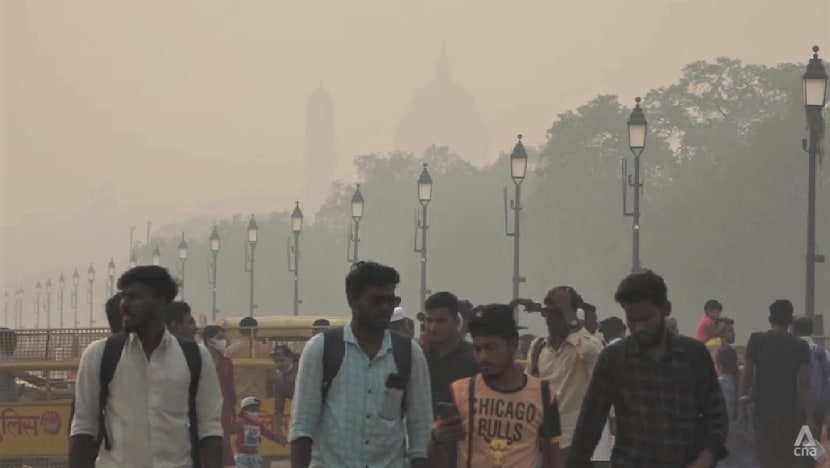Growing calls for more to be done to tackle pollution in New Delhi
In the past week alone, the number of residents complaining of chest pains, severe wheezing and headaches have doubled, according to local hospitals.

Every winter, a thick and choking layer of smog covers India’s capital New Delhi.
NEW DELHI: Every winter, a thick and choking layer of smog covers India’s capital New Delhi.
In the past week, the number of residents complaining of chest pains, severe wheezing and headaches have doubled, according to local hospitals.
There are growing calls for more to be done to tackle pollution in India, the world's third-largest emitter of greenhouse gases.
Small island nations at the ongoing United Nations Climate Change Conference have called on highly polluting economies such as India and China to pay into a climate compensation fund to help countries affected by climate change to rebuild.
TACKLING INDIA'S TOXIC SMOG
To tackle the toxic smog in New Delhi and surrounding areas, some emergency measures have since been put in place.
Polluting cars cannot run on the city's roads. The public transport system has been boosted by an additional 500 buses running on Delhi's roads.
This comes as traffic exhaust is one of the main drivers of the filthy smog that permeates the skies.
Anti-smog guns are also being used. Private construction and demolition activities are banned.
However, critics pointed out that all these measures are only announced once things get out of control.
They also argued that the government is spending taxpayers' money on technology that may not even work.
For instance, two 25m-tall “smog towers”, equipped with industrial fans and costing several millions of dollars to build, were unveiled in the capital last year.
The idea is that the large fans would suck in polluted air and purify it within a 1km radius.
The government claimed a preliminary study has found that in the vicinity, up to 80 per cent of the air gets purified.
ARE MEASURES EFFECTIVE?
But Delhi residents are unsure if such innovations would work.
One resident Ravina Singh said: "I have no problem if they spend our money on these things, but I don't feel a difference standing next to it."
Another resident Arvind Rawat said: "The government should strengthen the public transport system. This doesn't help us in any way at all."
Experts said a crackdown on the burning of coal and biomass is more urgent.
They added that regional governments across north India should strictly enforce the ban on stubble burning.
"If you take all the megacities in the world, Delhi has one of the worst public transport infrastructures,” said environmentalist Chandra Bhushan. “Its roads are completely unsafe for cycling and walking.
“So we're not providing an opportunity to Delhi residents to take public transport, to walk and cycle, and leave their vehicles at home."















